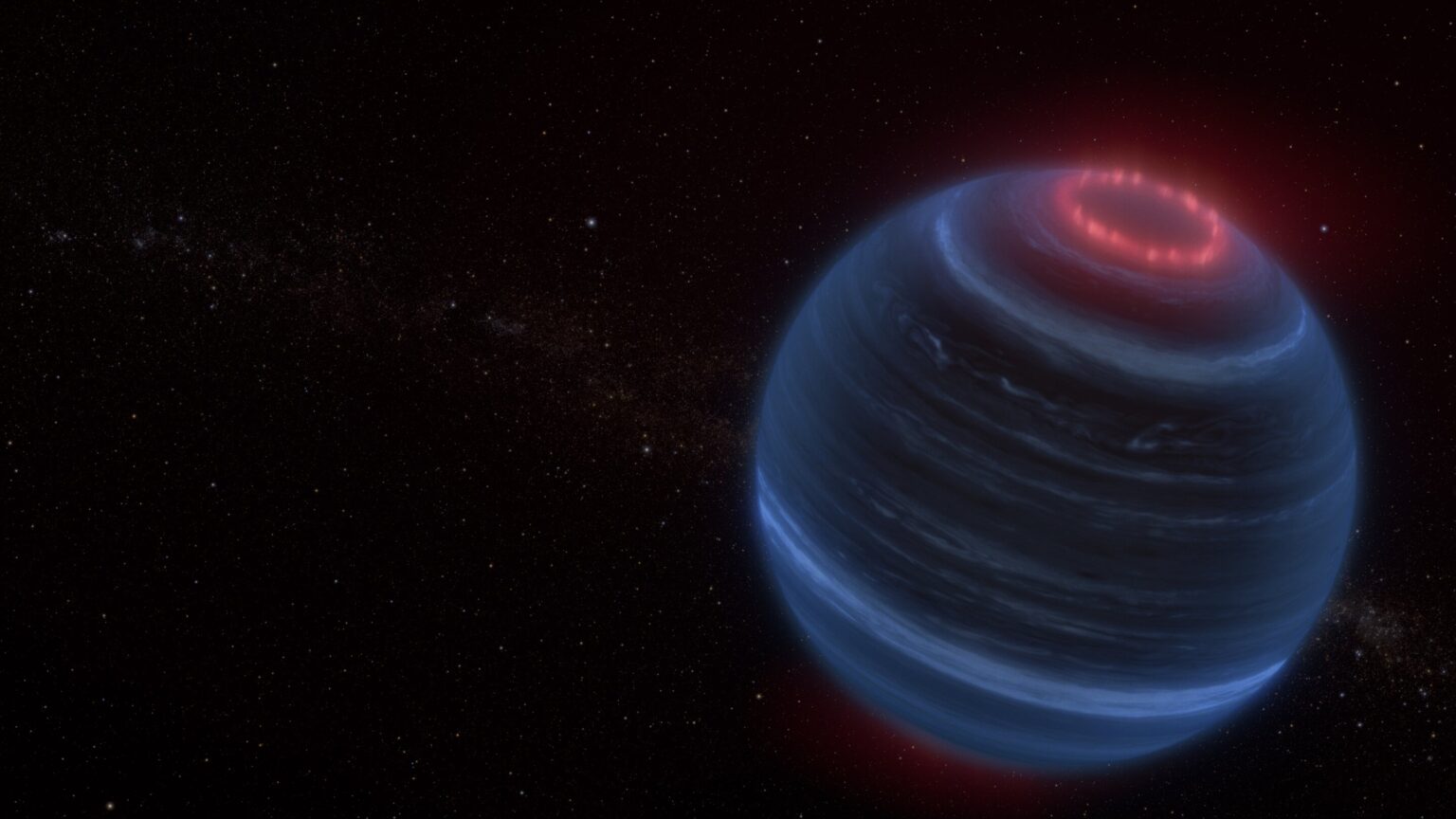The James Webb Space Telescope allowed scientists to take a good look at the brown dwarf W1935, located 47 light years away from us. They found that auroras were raging on this “failed star”. Their cause may be a still undiscovered moon.

Brown Dwarf W1935
Using new observations from the James Webb Space Telescope (JWST), astronomers have detected methane emissions on the brown dwarf. This is quite an unexpected find for such a cold and isolated world.
More massive than planets, but lighter than stars, brown dwarfs are ubiquitous in the vicinity of the Sun. Their number is measured in thousands. Last year, Jackie Faherty, a senior researcher and senior education manager at the American Museum of Natural History, led a group of researchers who got time on the James Webb Telescope to explore 12 similar objects.
Among them was CWISEP J193518.59-154620.3 (or W1935 for short), a cold brown dwarf 47 light-years away, which was jointly discovered by participants in the Backyard Worlds: Planet 9 project, social science volunteer Dan Caselden and the NASA CatWISE team.
W1935 is a cold brown dwarf with a surface temperature of about 400°Fahrenheit. Its mass is not known for certain, but it probably ranges from six to 35 Jupiter masses.
Features of the brown dwarf’s atmosphere
After studying a number of brown dwarfs that were observed using JWST, Faherty’s team noticed that W1935 looked similar, but with one striking exception: it emitted methane, which had never been observed on brown dwarfs before.
Computer simulations have brought another surprise: the brown dwarf probably has a temperature inversion, a phenomenon in which the atmosphere gets warmer with increasing altitude. Temperature inversions can easily happen to planets orbiting stars, but W1935 is isolated, with no obvious external heat source.
The researchers needed to figure out where this extra heat in the upper atmosphere came from. To do this, astronomers turned to our Solar System. In particular, they studied data on Jupiter and Saturn, which demonstrate methane emissions and have temperature inversions. The likely cause of such a feature on the giants of the Solar System are auroras, so the research team assumed that they had discovered the same phenomenon on W1935.
Auroras in the Solar System
Planetary scientists know that one of the main factors of the auroras on Jupiter and Saturn are the high-energy particles of the Sun, which interact with the magnetic fields and atmospheres of the planets, heating the upper layers. This is also the reason for the auroras that we see on Earth, which are commonly referred to as the Northern or Southern Lights because they are most unusual near the poles. But since W1935 does not have a host star, the solar wind cannot be the cause of this phenomenon.
There is also another possible cause of the aurora, familiar to scientists in the Solar System. Both Jupiter and Saturn have active moons, which from time to time emit matter into space, interact with planets and enhance the auroral trace on these worlds. Jupiter’s moon, Io, is the most volcanically active in the Solar System, erupting fountains of lava tens of miles high, and Saturn’s moon, Enceladus, emits water vapor from its geysers, which simultaneously freezes and boils when it enters space.
More observations are needed, but the researchers suggest that one explanation for the aurora on W1935 may be an active, still undiscovered moon.
According to phys.org
Follow us on Twitter to get the most interesting space news in time
https://twitter.com/ust_magazine


